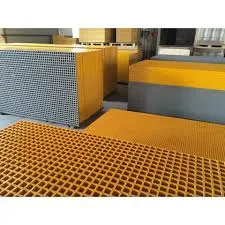
-
 Afrikaans
Afrikaans -
 Albanian
Albanian -
 Amharic
Amharic -
 Arabic
Arabic -
 Armenian
Armenian -
 Azerbaijani
Azerbaijani -
 Basque
Basque -
 Belarusian
Belarusian -
 Bengali
Bengali -
 Bosnian
Bosnian -
 Bulgarian
Bulgarian -
 Catalan
Catalan -
 Cebuano
Cebuano -
 China
China -
 China (Taiwan)
China (Taiwan) -
 Corsican
Corsican -
 Croatian
Croatian -
 Czech
Czech -
 Danish
Danish -
 Dutch
Dutch -
 English
English -
 Esperanto
Esperanto -
 Estonian
Estonian -
 Finnish
Finnish -
 French
French -
 Frisian
Frisian -
 Galician
Galician -
 Georgian
Georgian -
 German
German -
 Greek
Greek -
 Gujarati
Gujarati -
 Haitian Creole
Haitian Creole -
 hausa
hausa -
 hawaiian
hawaiian -
 Hebrew
Hebrew -
 Hindi
Hindi -
 Miao
Miao -
 Hungarian
Hungarian -
 Icelandic
Icelandic -
 igbo
igbo -
 Indonesian
Indonesian -
 irish
irish -
 Italian
Italian -
 Japanese
Japanese -
 Javanese
Javanese -
 Kannada
Kannada -
 kazakh
kazakh -
 Khmer
Khmer -
 Rwandese
Rwandese -
 Korean
Korean -
 Kurdish
Kurdish -
 Kyrgyz
Kyrgyz -
 Lao
Lao -
 Latin
Latin -
 Latvian
Latvian -
 Lithuanian
Lithuanian -
 Luxembourgish
Luxembourgish -
 Macedonian
Macedonian -
 Malgashi
Malgashi -
 Malay
Malay -
 Malayalam
Malayalam -
 Maltese
Maltese -
 Maori
Maori -
 Marathi
Marathi -
 Mongolian
Mongolian -
 Myanmar
Myanmar -
 Nepali
Nepali -
 Norwegian
Norwegian -
 Norwegian
Norwegian -
 Occitan
Occitan -
 Pashto
Pashto -
 Persian
Persian -
 Polish
Polish -
 Portuguese
Portuguese -
 Punjabi
Punjabi -
 Romanian
Romanian -
 Russian
Russian -
 Samoan
Samoan -
 Scottish Gaelic
Scottish Gaelic -
 Serbian
Serbian -
 Sesotho
Sesotho -
 Shona
Shona -
 Sindhi
Sindhi -
 Sinhala
Sinhala -
 Slovak
Slovak -
 Slovenian
Slovenian -
 Somali
Somali -
 Spanish
Spanish -
 Sundanese
Sundanese -
 Swahili
Swahili -
 Swedish
Swedish -
 Tagalog
Tagalog -
 Tajik
Tajik -
 Tamil
Tamil -
 Tatar
Tatar -
 Telugu
Telugu -
 Thai
Thai -
 Turkish
Turkish -
 Turkmen
Turkmen -
 Ukrainian
Ukrainian -
 Urdu
Urdu -
 Uighur
Uighur -
 Uzbek
Uzbek -
 Vietnamese
Vietnamese -
 Welsh
Welsh -
 Bantu
Bantu -
 Yiddish
Yiddish -
 Yoruba
Yoruba -
 Zulu
Zulu
exploring efficient methods for streamlining frp laundering ...
Exploring Efficient Methods for Streamlining FRP Laundering
With the increasing emphasis on sustainable practices and environmental responsibility, the laundering of fiber-reinforced plastics (FRP) has gained significant attention in industrial sectors. FRP materials are commonly used due to their high strength-to-weight ratio and durability; however, the efficient laundering and management of waste generated during their fabrication and recycling present considerable challenges. Streamlining these processes can lead to reduced costs, enhanced recycling rates, and minimized environmental impact.
One effective method for streamlining FRP laundering is the adoption of automated washing systems. These systems can efficiently handle large batches of FRP components, ensuring uniform cleaning while reducing water consumption. For instance, ultrasonic cleaning technology can be employed to remove contaminants from intricate surfaces, which manual cleaning methods may overlook. This advanced approach not only enhances the cleanliness of FRP parts but also improves the overall quality of the final product.
Additionally, integrating a closed-loop water system into the laundering process can lead to significant reductions in water usage. This system recirculates water, minimizing waste and ensuring that contaminants are properly filtered before reuse. Such practices not only comply with environmental regulations but also lower operational costs associated with water consumption. Companies that implement closed-loop systems often find that the long-term savings outweigh the initial investment, making it a financially savvy choice.
exploring efficient methods for streamlining frp laundering ...

Moreover, adopting eco-friendly cleaning agents that are biodegradable and non-toxic can further streamline the laundering process. These agents not only enhance the cleaning efficiency but also align with the growing consumer demand for environmentally responsible practices. By reducing the reliance on harsh chemicals, manufacturers can create a cleaner workplace while meeting regulatory requirements more easily.
Collaboration across the supply chain is another vital aspect of streamlining FRP laundering. By working closely with suppliers, manufacturers can ensure that materials used in production are compatible with the laundering processes. This thorough communication can lead to the development of more easily recyclable FRP materials, facilitating a smoother laundering process.
In conclusion, streamlining the laundering of fiber-reinforced plastics is essential for enhancing operational efficiency and environmental sustainability. By implementing automated washing systems, closed-loop water systems, eco-friendly cleaning agents, and fostering supply chain collaboration, manufacturers can significantly improve their laundering processes. As industries continue to embrace sustainable practices, these methods will be pivotal in mitigating environmental impact while optimizing production efficiencies.









